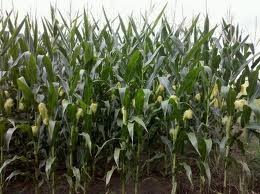 Iowa State University agronomy climatologist Elwynn Taylor warned Thursday that the U.S. corn yield is likely to average 149 bushels per acre, which would be lowest in five years.
Iowa State University agronomy climatologist Elwynn Taylor warned Thursday that the U.S. corn yield is likely to average 149 bushels per acre, which would be lowest in five years.
Taylor’s estimate was four bushels per acre below the U.S. Department of Agriculture estimate released last week. Other agronomists and farmers believe the government’s estimate is too high.
A 149 bushel per acre yield, 9 percent below what U.S. farmers produced two years ago, could worsen the problem of tight U.S. corn supplies. That could raise costs for ethanol plants and livestock producers, ultimately resulting in higher meat prices.
The yield problem stems from the hot weather that hit Iowa and Illinois in the last half of July.
Corn normally pollinates best at temperatures in the upper 80s. Instead, Iowa and Illinois endured temperatures near 100 degrees during the crucial two weeks of pollination.
While temperatures have cooled since, an ISU Extension report said "the reprieve will not restore the loss of potential crop yield that was incurred by faulty pollination."
The reports of ISU specialists confirm what many Iowa farmers have seen in their fields this summer.
Farmer Rob Russell in Prescott in Union County, while watching daughter Gracie take the reserve grand champion ribbon at the 4-H show this week at the Iowa State Fair, lamented the condition of his crop reeling under one-two punches of extreme heat and dryness.
"My corn burned up," Russell said.
Iowa Secretary of Agriculture Bill Northey said at the State Fair that "from what we’re hearing from around the state, I’m really worried about the crop."
The USDA said a week ago that Iowa’s corn yield would be 177 bushels per acre, up from 165 bushels per acre last year but below the record 182 bushels two years ago.
But the USDA forecast has been received skeptically.
"I’d say this year’s corn yield in Iowa will be about like last year’s," said Taylor’s colleague at ISU Extension, agronomist Roger Elmore.
In addition to the pollination problems, Elmore said Iowa’s corn crop this year is afflicted with Goss’ wilt, caused by extreme warm and damp conditions, as well as corn aphids.
Another problem for Iowa corn production has been floods along the Missouri River. Farmer Leo Ettleman said all but 400 of the 2,300 acres he farms in Fremont County near Hamburg are under Missouri River water.
"I have insurance on the crop," said Ettleman. "But we can’t get the production back. The corn is gone for good."
The USDA originally forecast a national yield of 158.7 bushels per acre through midsummer, then dropped its estimate to 153 bushels per acre in its latest supply and demand report last week.
Taylor’s estimate of 149 bushels an acre would match the yield of the 2006 harvest.
The USDA also warned that tight corn supplies, and prices in excess of $7 per bushel, would persist into next year, putting upward prices on meat and cutting into ethanol profits.
For Iowa, the nation’s largest corn producer, the news would be mixed.
Cattle and hog producers, reluctant to expand their herds in the face of high corn prices, will produce less beef and pork.
Consumers are paying anywhere from 10 percent more for hamburger to 25 percent more for bacon through next year.
But Iowa’s farmers will receive almost $16 billion for even a reduced corn crop after the this year’s harvest, a sharp increase from the $11 billion in cash receipts from the 2010 crop.
Soybean sales are expected to bring another $6.6 billion in cash.
That, in turn, will help keep the farm implement manufacturers busy in Iowa. Deere & Co., Iowa’s largest manufacturing employer, forecast this week that farm machinery sales would likely continue to be strong through next year.
"What this means is that when the politicians come here to tell us how to fix the economy, Iowa agriculture will be in relatively good shape," said commodity trader Don Roose of US Commodities in West Des Moines.
The huge drop in the stock market Thursday caused investors to flee all commodities.
Corn was down 12 cents per bushel for December delivery, to $7.13. Soybeans fell 6 cents per bushel to $13.61.
"But remember, those prices are still way ahead of where they were early last year," said Roose, referring to corn prices that stood at $3.45 per bushel and soybeans at $9 per bushel in June 2010.
The Chicago Board of Trade noted that corn and soybean prices dropped less sharply than stocks and crude oil.

Deprecated: strpos(): Passing null to parameter #1 ($haystack) of type string is deprecated in /home/agriviek8Qv/agriviet.net/public_html/wp-includes/comment-template.php on line 2522